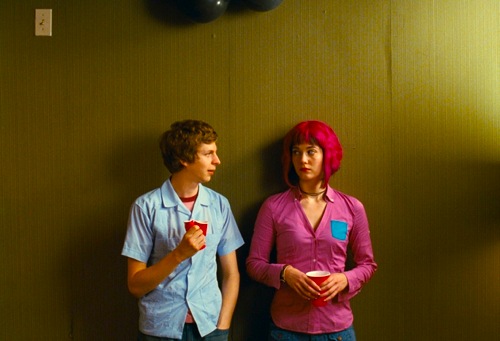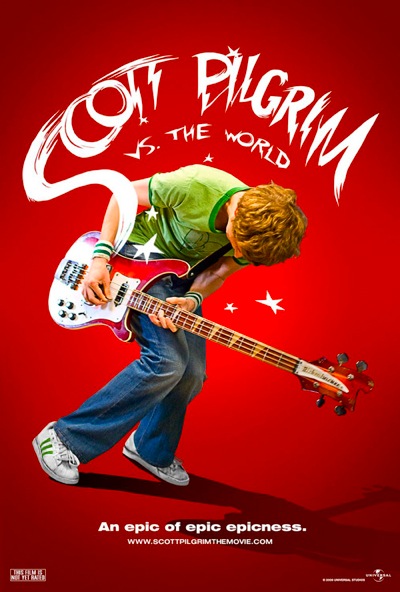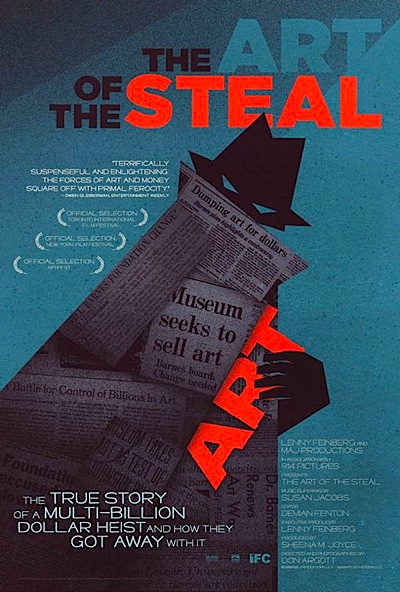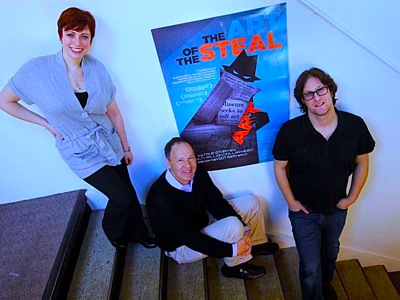
By Patricia Ducey. Scott Pilgrim vs. The World is an action-packed, coming of age adventure that even non-gamers – or those unfamiliar with the original graphic novel – can enjoy. Pilgrim is adapted from Canadian Brian Lee O’Malley’s graphic novels of the same name by writer/director Edgar Wright (of comedy classic Shaun of the Dead) and remains true to the visuals and the spirit of O’Malley’s story. But Wright grabs every film and cultural reference he can and brings the novel to life in a bold and raucous romp through 20-something slackerdom and redemption.
Michael Cera, of Superbad fame and present day reigning filmic geek, graduates in Pilgrim vs. the World into action hero and possibly into mature manhood. Cera plays a 22-year-old bass guitarist living in a one-room shack with best friend/gay roommate Wallace (Kieran Culkin in a fine performance). He and his buddies are trying to break into indie rock stardom with their garage band Sex Bob-omb, while Scott manages or mismanages his complicated, feckless love life. (The band is actually pretty good, with songs written by Beck.)
Scott lives partly in Toronto and partly in his own fevered dreams. He is a serial heartbreaker who refuses to take responsibility for the trail of tears he leaves behind when he bails. He negotiates the vagaries of a multiculti, multi-sexual limbo of 20-something slackerdom; he and his buddies are adrift, jobless, unable to commit to anything or anyone. His chaste romance with a 17-year-old (and thus unavailable) schoolgirl Knives Chau personifies that emotional paralysis.
 His hesitant heart explodes, though, when he spies the beautiful and aloof Ramona Flowers, a woman his own age, whose disinterest proves the headiest of aphrodisiacs. After one date, he discovers the roots of her melancholy withdrawal—a string of mean ex-boyfriends who have wounded her, she fears, for good. To win her, he must first defeat these 7 jealous ex-boyfriends, now allies in the nefarious League of Evil Exes (Axis of Evil?) and release her from the past. Scott easily vanquishes first ex Mathew Patel, an Indian-Canadian hipster, who then breaks into a Bollywood danceoff accompanied by his demon chick backup dancers. After defeating an angry lesbian and a vegan rock star, Scott approaches the last level and last ex, Evil Exes ringleader Gideon, the one who still holds sway over Ramona’s affections. In a nod to the classic Rushmore, Gideon is played by the grandfather of all lovelorn nerd heroes, a now grown up Jason Schwartzman.
His hesitant heart explodes, though, when he spies the beautiful and aloof Ramona Flowers, a woman his own age, whose disinterest proves the headiest of aphrodisiacs. After one date, he discovers the roots of her melancholy withdrawal—a string of mean ex-boyfriends who have wounded her, she fears, for good. To win her, he must first defeat these 7 jealous ex-boyfriends, now allies in the nefarious League of Evil Exes (Axis of Evil?) and release her from the past. Scott easily vanquishes first ex Mathew Patel, an Indian-Canadian hipster, who then breaks into a Bollywood danceoff accompanied by his demon chick backup dancers. After defeating an angry lesbian and a vegan rock star, Scott approaches the last level and last ex, Evil Exes ringleader Gideon, the one who still holds sway over Ramona’s affections. In a nod to the classic Rushmore, Gideon is played by the grandfather of all lovelorn nerd heroes, a now grown up Jason Schwartzman.
Canadian O’Malley’s Toronto, filmed in lovely tones of winter black and white, proves a lovely palate cleanser when sequences of dazzling special effects and primary-colored graphics threaten to overwhelm. Wright borrows visuals from PacMan to Wii, the original TV show Batman, manga, comic book split screen close-ups, and even inserts of O’Malley’s original pen and ink drawings from his Scott Pilgrim novel series.
Pilgrim has been described as the first movie for the joystick generation, and it may well be the first ‘post-liberal’ film, as well. The characters exist in the fullness of well-developed character, not as motes in some polemicist’s eye. Wallace’s sexuality is but one facet of his character: he is neither Magical Gay nor Victim Gay. The racial identity of Knives Chau or Mathew Patel is as important to the narrative as Scott’s — which is to say, not at all. Pilgrim also merrily and mercilessly jabs at a few PC targets like vegans, in a laugh-out-loud sequence involving one of Ramona’s exes.
Pilgrim vs. the World at almost two hours may be a couple of villainous exes too long — O’Malley claims they structured the story like a game, with confrontations that lead to higher levels or to doom — but its heart and its values redeem it all in the end. Pilgrim is probably safe for teenagers, with a few sexual references and excesses, but Scott and his buddies learn a few lessons about responsibility and empathy, and the world rights itself.
Kudos to Wright for keeping it PG and exploiting fully the dispensation from cynicism that Hollywood grants to Young Adult fare; for all its techno razzle-dazzle, Pilgrim v. World honors a very traditional narrative that respects its ‘message’ and its young viewers both.
Posted on August 24th, 2010 at 3:29pm.

